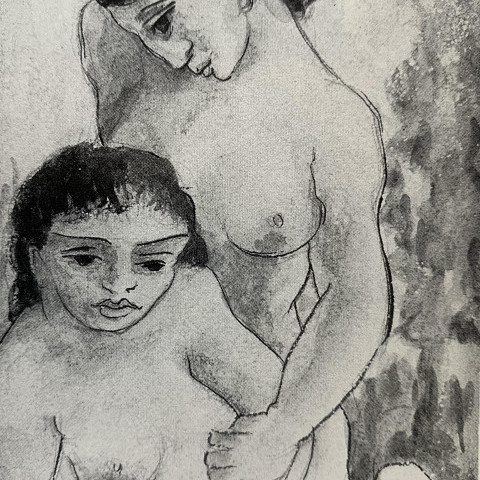One of the more stylistically pioneering of the early modernists, Max Weber was a key figure in introducing avant-garde art to America. He worked in the mediums of oil, watercolor, printmaking and sculpture, and his subjects sometimes reflected the spiritualism of his religion. His styles included Fauvism, Cubism, Dynamism, Expresssionism, and Futurism and reflected the broad spectrum of revolutionary art activity in Paris at the turn of the 19th into the 20th centuries.
He also created some social-realist paintings during the 1930s with depictions of factory scenes. These works reflected his left-wing political leanings, which he expressed as national chairman of the American Artists Congress, "the most powerful left-wing artists' organization of the period" (Baigell). He was a writer on topics of modern aesthetics including "The Fourth Dimension from a Plastic Point of View", published in Camera Work in July 1910.
He was from a strong Jewish background, having been born in Bialystok, Russia, and in 1891, he settled in Brooklyn. At the Pratt Institute, he studied with Arthur Wesley Dow from whom he learned to see forms as visual relationships rather than objects. He taught public school art in Lynchburg, Virginia from 1901 to 1903, and Duluth, Minnesota from 1903 to 1905, and then studied in Paris at the Academie Julian, Academie Colarossi, and Academie de la Grande Chaumiere.
He was much influenced by Cubist artists Pablo Picasso and George Braque and then returned to New York in 1909, where he experimented with many modernist styles.
He was among the first American artists to show an interest in Indians of the American Southwest, and in 1913, his one-man exhibition at the Newark Museum was the first exhibition of an American museum for a modernist artist.
Sources:
Matthew Baigell, Dictionary of American Art
Peter Hastings Falk, Editor, Who Was Who in American Art

